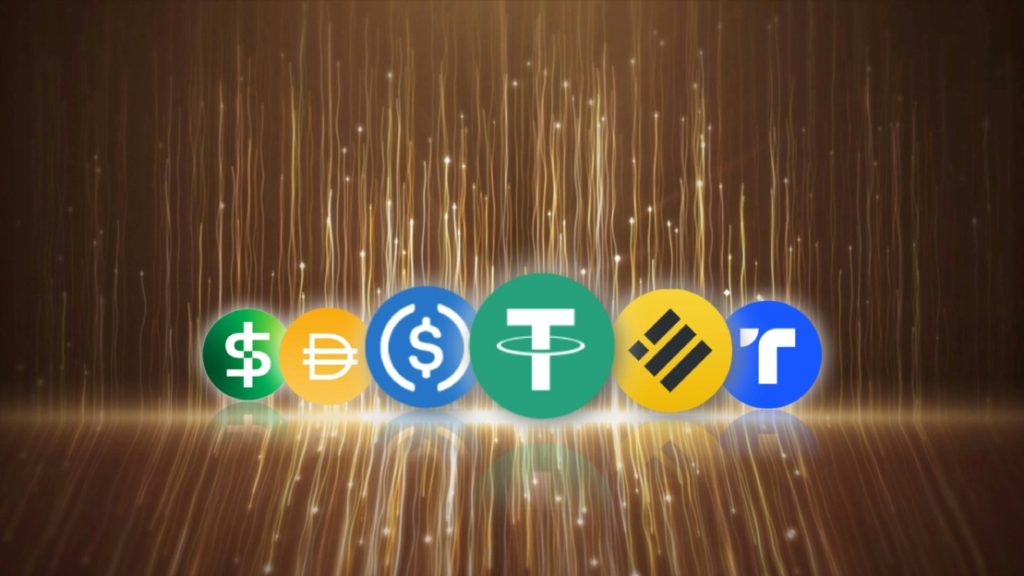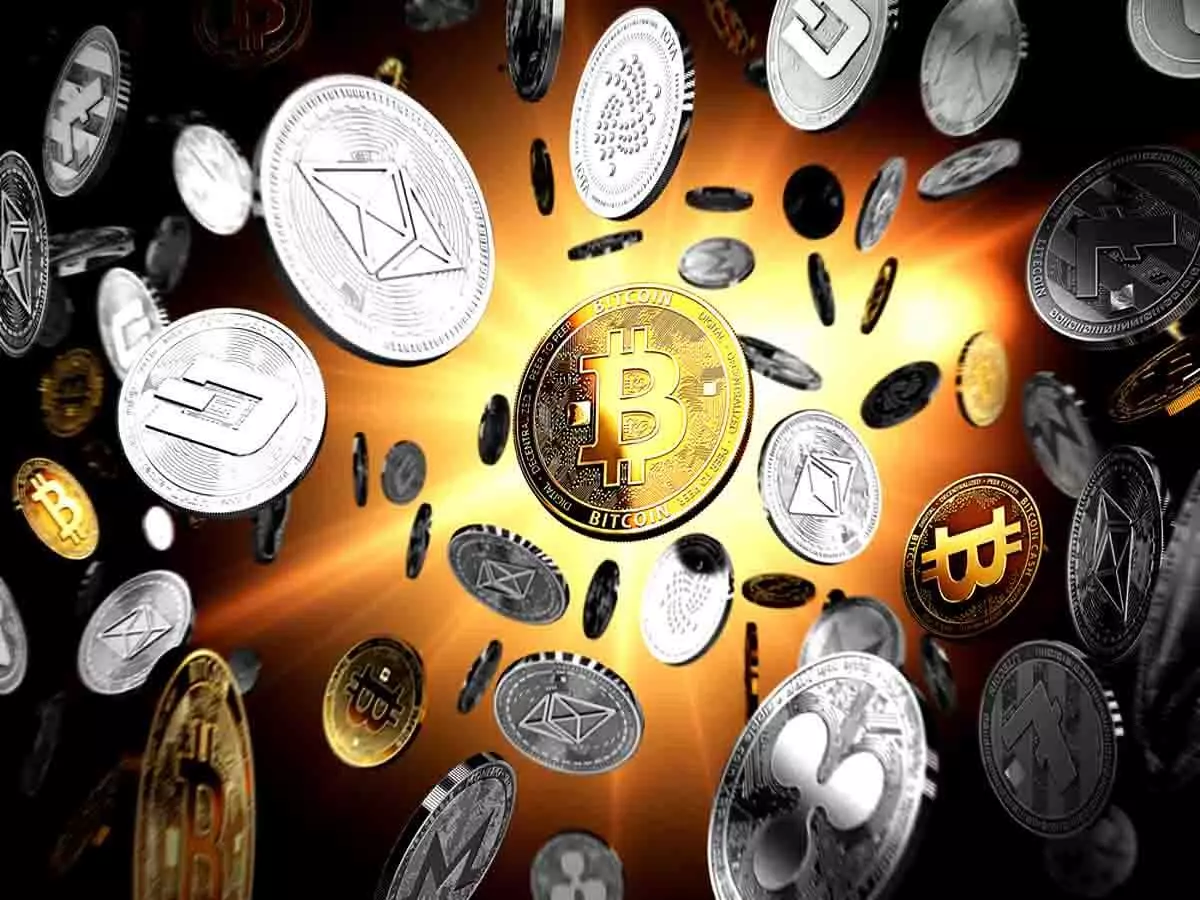As digital assets become increasingly integral to modern finance, stablecoins have emerged as a pivotal component in the cryptocurrency ecosystem. Designed to maintain a stable value by pegging to assets like fiat currencies or commodities, stablecoins offer a unique blend of the benefits of cryptocurrencies and the stability of traditional financial instruments. This article delves into the intricacies of stablecoin investing, highlighting both the opportunities and the inherent risks.

Content
Understanding Stablecoins
Stablecoins are digital currencies engineered to minimize price volatility by anchoring their value to more stable assets. They are categorized based on their underlying collateral:
Fiat-Backed Stablecoins
These stablecoins are pegged to traditional government-issued currencies such as the U.S. dollar, euro, or British pound. Each token is typically backed 1:1 by fiat reserves held in custody by a central entity, such as a bank or regulated custodian. This category includes popular examples like Tether (USDT) and USD Coin (USDC), both of which are widely used across crypto exchanges and DeFi platforms for trading, payments, and yield-generating activities. Fiat-backed stablecoins are considered the most straightforward and stable due to their direct link to real-world currency reserves, although their transparency depends heavily on the auditing practices of their issuers. They are often discussed by stablecoin investment consultants when evaluating stablecoins within diversified portfolios.
Crypto-Backed Stablecoins
Instead of relying on fiat reserves, these stablecoins are collateralized by other cryptocurrencies such as Ether (ETH) or wrapped Bitcoin (WBTC). Due to the volatile nature of crypto assets, these stablecoins often require over-collateralization, meaning users must lock up assets worth more than the value of the stablecoins they mint. For example, Dai (DAI)—issued by the MakerDAO protocol—requires users to lock up crypto collateral in smart contracts that autonomously manage liquidation risk. While more decentralized and transparent, crypto-backed stablecoins carry inherent volatility exposure. They’re frequently explored in DeFi finance consulting services for more advanced users who want exposure to decentralized financial tools without direct fiat interaction.
Commodity-Backed Stablecoins
These tokens derive their value from physical commodities like gold, oil, or even real estate. Each stablecoin unit is typically backed by a corresponding quantity of the physical asset held in reserve. An example is Paxos Gold (PAXG), which represents ownership of one fine troy ounce of gold stored in a secure vault. Commodity-backed stablecoins provide an on-chain method for gaining exposure to traditional hard assets, making them increasingly relevant to real asset tokenization investment consultants. They offer an alternative store of value during times of fiat currency devaluation or geopolitical uncertainty.
Algorithmic Stablecoins
These stablecoins differ significantly from the others, as they are not backed by any real-world or digital asset. Instead, they rely on supply and demand algorithms—often encoded into smart contracts—to maintain a stable price. These protocols automatically increase or decrease token supply in response to market conditions. While innovative, algorithmic stablecoins such as TerraUSD (UST) (which famously collapsed) have shown that this model is inherently risky if not well-designed and supported by robust incentives. Despite setbacks, algorithmic stablecoins continue to evolve and are often debated within digital asset strategy consulting firm discussions as potential tools for truly decentralized monetary systems, though caution remains paramount due to prior failures.
The primary appeal of stablecoins lies in their ability to combine the rapid transaction capabilities of cryptocurrencies with the consistent value of traditional currencies.
Opportunities in Stablecoin Investing
1. Portfolio Diversification and Stability
Incorporating stablecoins into a digital asset portfolio can provide a buffer against the notorious volatility of cryptocurrencies. By offering a stable store of value, they allow investors to hedge against market downturns without exiting the crypto ecosystem.
2. Enhanced Liquidity
Stablecoins facilitate seamless trading between various cryptocurrencies, acting as a bridge asset. Their consistent value ensures that traders can quickly move funds without the need to convert to fiat currencies, enhancing market efficiency.
3. Yield Generation
Some platforms offer interest-bearing accounts for stablecoin deposits, allowing investors to earn passive income. This is particularly appealing in regions with low-interest rates, providing an alternative avenue for yield generation.
4. Cross-Border Transactions
Stablecoins enable swift and cost-effective cross-border payments, bypassing traditional banking systems. This is especially beneficial in countries with unstable currencies or limited access to banking infrastructure.
Risks Associated with Stablecoin Investing
1. Counterparty and Collateral Risks
The stability of a stablecoin hinges on the credibility of its issuer and the quality of its collateral. If the reserves are mismanaged or insufficient, the stablecoin can lose its peg, leading to potential losses for investors.
2. Regulatory Uncertainty
The regulatory landscape for stablecoins is still evolving. Changes in regulations can impact the legality, usage, and value of stablecoins. For instance, discussions around the need for reserve transparency and compliance with financial laws are ongoing in various jurisdictions.
3. Technological Vulnerabilities
As digital assets, stablecoins are susceptible to technological risks, including smart contract bugs, hacking incidents, and cyber-attacks. Such vulnerabilities can compromise the security and value of stablecoin holdings.
4. Market Dynamics
In times of market stress, stablecoins can experience liquidity issues. A sudden surge in redemption requests can strain the reserves, potentially leading to a loss of the peg and broader market disruptions.

Navigating the Stablecoin Investment Landscape
For those considering stablecoin investments, it’s crucial to conduct thorough due diligence:
- Assess the Issuer’s Credibility: Ensure that the stablecoin issuer maintains transparent and verifiable reserves.
- Understand the Collateral Mechanism: Different stablecoins use varied methods to maintain their peg. Familiarize yourself with these mechanisms to gauge potential risks.
- Stay Informed on Regulatory Developments: Regulatory changes can significantly impact the stablecoin market. Regularly monitor news and updates from financial authorities.
- Diversify Holdings: Avoid concentrating investments in a single stablecoin. Diversification can mitigate risks associated with individual stablecoin failures.
Partner With Kenson Investments
Stay informed with Kenson Investments’ insights into the evolving world of digital assets. Learn how digital asset specialists help make sense of stablecoins, tokenization, and blockchain trends—through educational resources and research designed for clarity, not complexity. Whether you’re exploring digital asset portfolio management, curious about altcoin investment options, or seeking updates on real world assets on chain investment, Kenson Investments offers content to support informed participation in the digital asset space.
About the Author
The author is a digital asset content writer with a focus on blockchain innovation, tokenized markets, and decentralized finance. With a background in FinTech communications and a passion for making complex topics accessible, he produces educational content tailored for informed market participants. His work draws from real-world insights across crypto, tokenization, and digital asset infrastructure—offering clarity on topics ranging from stablecoin investment trends to digital asset consulting for compliance.
Disclaimer: The information provided on this page is for educational and informational purposes only and should not be construed as financial advice. Crypto currency assets involve inherent risks, and past performance is not indicative of future results. Always conduct thorough research and consult with a qualified financial advisor before making investment decisions.
“The crypto currency and digital asset space is an emerging asset class that has not yet been regulated by the SEC and US Federal Government. None of the information provided by Kenson LLC should be considered as financial investment advice. Please consult your Registered Financial Advisor for guidance. Kenson LLC does not offer any products regulated by the SEC including, equities, registered securities, ETFs, stocks, bonds, or equivalents”

Randal Daly has been following the crypto space since 2024. He is a passionate advocate for blockchain technology, and believes that it will have a profound impact on how people live their lives. In addition to being an avid blogger, Randal also enjoys writing about developments in the industry as well as providing useful guides to help those who are new to this exciting frontier of finance and technology.




